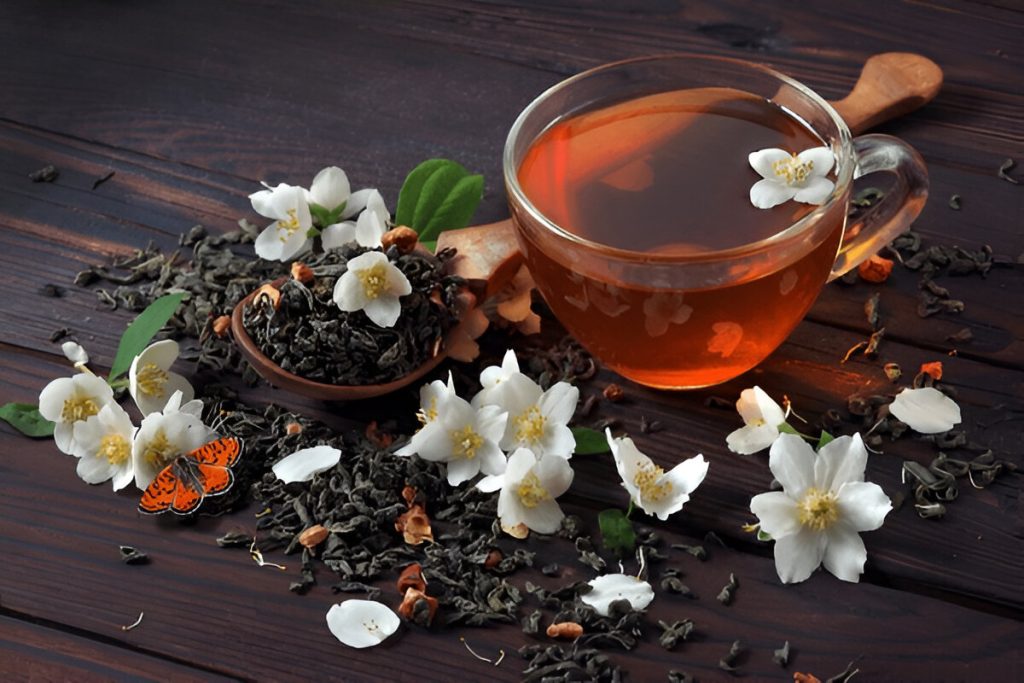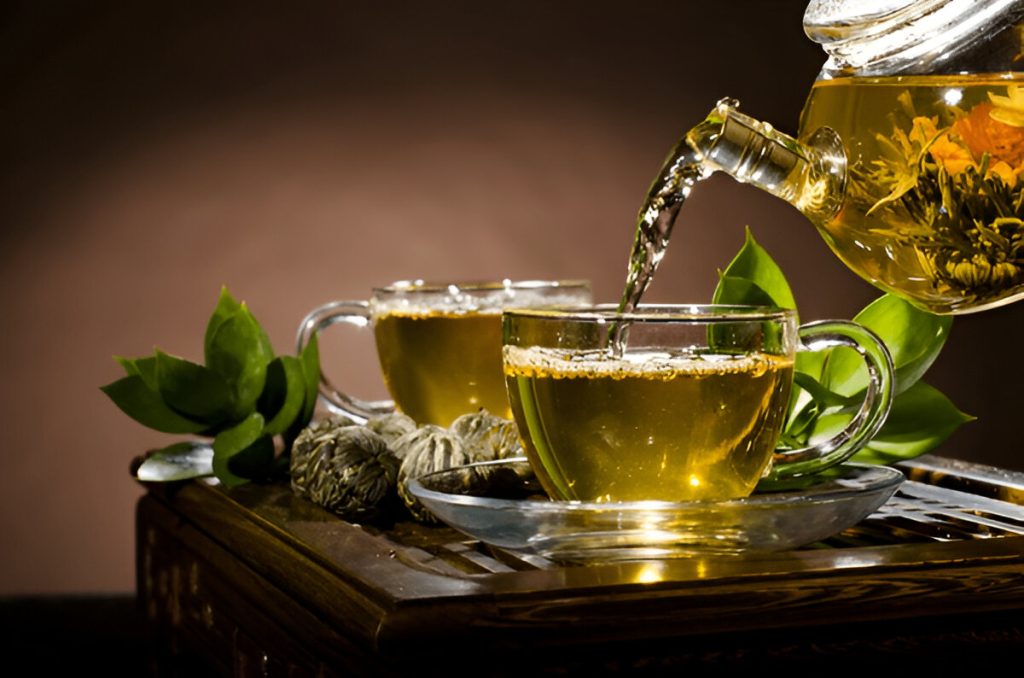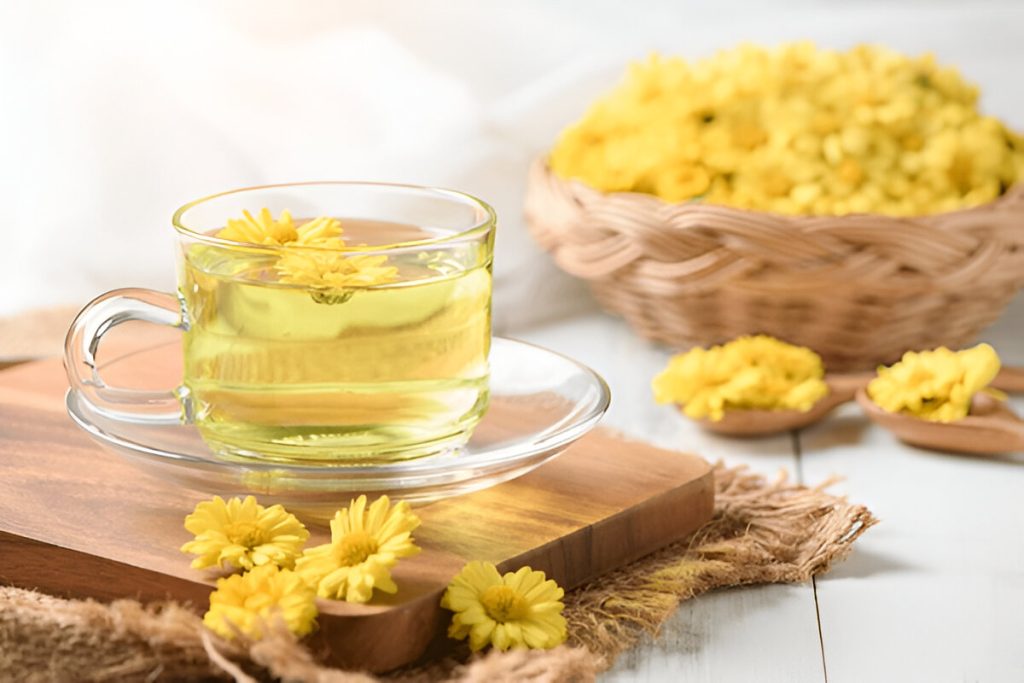If you have ever visited a Chinese restaurant, you must be familiar with the traditional serving of tea to the guests soon after they are seated. The tradition is far more elaborate than simple courtesy, it is an integral part of the meal customs in China, feeling the tea enhances the meal as a whole. While sipping on the aromatic beverage, you may ask yourself what tea is being offered and why it plays such a crucial role in a Chinese meal. The world of tea served in Chinese restaurants is diverse. It ranges from delicate jasmine to pu-erh which is more robust. All of them have their own unique features that complement different dishes.
The Tradition of Tea in Chinese Restaurants
The tradition of serving tea in Chinese restaurants is no mere custom. It goes far beyond that to become a multi-century ancient practice that focuses on health, and tradition. There is an ancient Chinese practice that states “three teas and six meals” which, as the name suggests, involves serving tea alongside meals 3 times a day, it comes with a predefined set of etiquette. This showcases the host’s concern and hospitality toward the guests.
That pot of tea waiting for you to take a sip at a Chinese restaurant acts as a welcoming gesture that marks the beginning of your wonderful journey. Right from the start, the action creates an aura of warmth that shows appreciation that you are a guest. It does not matter whether you visit a small local joint or a high-end restaurant, this practice remains the same.
The tradition goes well beyond matters of courtesy, tea is served strategically to improve the dining experience. Most Chinese dishes are composed of rather rich, at times greasy, and multifaceted cuisines. The tea sharpens the richness, refreshes the mouth between bites, and facilitates digestion, hence, the name signifies dining companion.
Jasmine Tea: The Classic Choice
Undoubtedly one of the most popular forms of tea in Chinese restaurants, principally for the northerners, is jasmine tea. This varietal is made by steeping tea leaves, usually green tea, with fresh jasmine flowers and boasts a pleasantly sweet scent and taste, which is refreshing and calming.

Jasmine tea is exceptionally flexible, as it showcases floral subtleties that allow it to pair with a wide range of foods from dim sum to seafood. Its delicate nature allows the tea to blend without overshadowing food flavours, making it a great addition to most Chinese dishes. The light refreshing flavour is pleasing even to non-tea drinkers.
Oolong Tea: The Well-Balanced Option
With its partial oxidation process, oolong tea sits in between green and black teas. It is also the most common type of tea served in Chinese restaurants. This semi-oxidized tea offers a diverse range of flavours and aromas from flowers and fruits to roasted and woody scents.

Most Chinese restaurants serve darker oolong teas that are heavily roasted. This results in a brew that is warm brown, and slightly lighter than most black teas. These varieties have a woody and moderately roasted aroma without bitterness common to black tea. The smooth and well-balanced flavour profile makes the tea best suited for heartier dishes such as Peking duck or braised pork.
Some varieties of Oolong are found in can often be seen in restaurants:
- TieGuanYin (Iron Goddess of Mercy): A popular oolong variety for its multifaceted floral notes
- Shui Hsien (Water Fairy): Another popular variety of oolong known for its rich flavour
- Da Hong Pao (Big Red Robe): A premium oolong sometimes found in higher-end establishments
Pu-erh Tea: The Digestive Aid
Generally seen in Cantonese restaurants and Dim Sum outlets, Pu-erh tea is aged and fermented, with origins from the Yunnan province. Singapore and Malaysia’s Chinatown serve it widely as they are well known for Cantonese food.

The unique way of fermenting gives Pu-erh its signature strong and earthy taste. Some offer muted tastes while others provide deep, rich flavours. Pu-erh is especially treasured for its digestive characteristics, making it great after heavy or greasy meals.
Chinese restaurants often offer two varieties:
- Raw Pu-erh (Sheng): Less processed and features brighter flavours
- Ripe Pu-erh (Shou): More deeply fermented and mellower in nature
Green Tea: The Fresh Option
Green tea varieties like Longjing (Dragon Well) appear in many Chinese restaurants, especially those from regions where green tea is traditionally preferred. Originating from Hangzhou, Dragon Well features flat and slender leaves that unfurl splendidly in hot water, producing a golden-green infusion.

The taste is grassy, mellow, and slightly sweet, making it fit alongside vegetarian dishes and delicate seafood preparations. The gentle nature and light character of green tea, and its straightforward method of preparation – steeping the leaves in a glass cup – make it a favourite among northern Chinese restaurants.
White tea: the delicate choice
While white tea is the least processed traditional Chinese tea, it rarely shows up in restaurants. However, it does appear in southern China, most notably in Fujian province. Brewed tea will Shou Mei tea’s taste is subtle, nuanced, and sweeter than Shou Mei’s slowly steeped outcomes of golden light tea.

The gentle tea creates a soothing synergy as it is a prime sweetener devoid of astringency and harsh notes derived from heavily processed teas compared to more raw and heavily processed teas. This is due to the herbal tea undergoing minimized fermentation and processing and simply being sun-dried or air-cured after being picked.
Chrysanthemum Tea: The Floral Alternative
This tea derived from dried chrysanthemum flower is devoid of caffeine making it a must-try for restaurant goers looking for an appealing sweet light notes accompanied with golden alchemy flourish.

Chrysanthemum tea, when blended with pu-erh is often offered in fusion cuisine-style restaurants where different cultural influences create intersectional balance to offer unique herbal taste and a mesmerizing visual that draws many.
Different Teas for Different Restaurant Types
As a rule of thumb, the price point gives away the quality and variety of the tea served with respect to the type of restaurant.
Affordable Chinese Restaurants
Jasmine Green tea, Pu-erh and TieGuanYin are examples of low-cost and low-quality outlets that serve blended and single teas. Considered cheaper, these neglect the art of tea crafting resulting in a boring, yet balanced, taste.
Examples of blends include the mixtures of chrysanthemum with pu-erh teas as well as the blends of loose-leaf green tea, oolong tea, and jasmine tea. These blends help cover the downsides of set varieties of tea and help them achieve a more universal appeal.
Mid to High-End Chinese Restaurants
Other types of establishments or mid to higher-end restaurants tend to sell exceptional grade loose-leaf teas which now include Da Hong Pao and even authentic longjing tea. Presentation is taken to the next level by using proper tea ware and providing the guest with better service.
Restaurants of this sort know their sophisticated guests enjoy tea nearly as much as they enjoy fine food so they know to focus and spend more on the better leaves and the proper brewing.
In joint with the other restaurant services mentioned above, the tea service tends to form a part of the whole dining experience instead of just another item on the menu.
Why Tea Enhances the Chinese Dining Experience
Serving tea alongside Chinese meals is a well-known practice, however, the reasoning behind it is practical and cultural as well.
Digestive benefits
Many traditional Chinese teas contain compounds that help break fats down and digestion. This is very particularly helpful when paired with Chinese cuisine which heavily features rich, fried, or strongly flavored meals. Hot teas make meals far easier to digest.
Palate Cleansing
Teas such as oolong and pu-erh have a mild astringency which refreshes the palate as it moves from one course to another. This ability helps in multi-course meals where consumers of the meal need to appreciate flavours distinctly and not interfere with the previous tastes.
Cultural Importance
In the Chinese culture, tea is considered a sign of respect and hospitality. The act of serving tea creates an atmosphere that is more welcoming and caring which makes better the social aspect of dining. Many families and restaurants continue this as a very crucial expression of the identity of Chinese culture.
Balance of Energies
Medicine of the ancients of China focuses more on the balance of two elements of food which are yin(cool) and yang(warm) energy. The warm tea acts towards complimenting this balance and hence creating harmony in the food which is promoted in ancient principles.
How to Properly Enjoy Chinese Restaurant Tea
To enjoy Chinese restaurant tea deeply:
- Ensure proper steeping before pouring; this takes roughly two to three minutes.
- Savour the steam by taking deep, slow breaths before sipping.
- Take small sips instead of large gulps to appreciate flavour changes.
- Savour the nuances of various tastes by sipping instead of gulping.
Tea should be enjoyed throughout the whole meal rather than before and after since there tends to be unity in using both food and tea in Chinese culinary traditions.
Conclusion
Warmth symbolizes welcome, while jasmine tea greets diners as they’re seated. The Chinese restaurant’s pu-erh tea is only served post-meal, but each variety plays a specific role throughout mealtime. Tea consumption plays an important part in the dining experience. Conclusively, the centuries of culture blended with practicality is why tea is consumed throughout the meal.
Next time you are in a Chinese restaurant, remember to give thought to the tea tradition as more than a drink offered to you free of charge. Think of it as part of Chinese history and culture. The same applies to the tea that comes with dim sums in Chinatown as well as with take outs from other Chinese restaurants, that simple pot of tea has incredible and complex historical significance.














